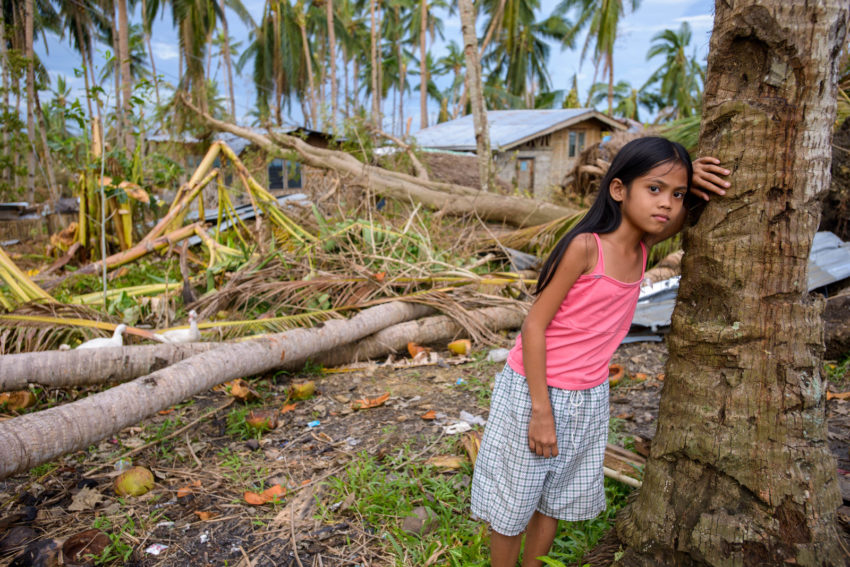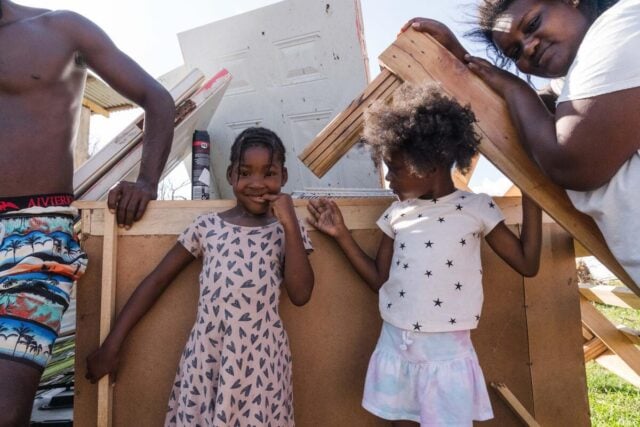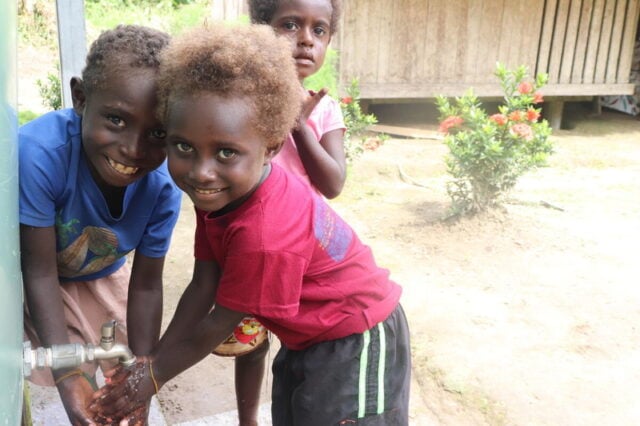Super Typhoon Haiyan, one of the most powerful typhoons in history, struck the Philippines on November 8, 2013, as a Category 5 storm. The typhoon’s fury affected more than 14 million people across 44 provinces, claiming the lives of over 8,000 people, and displacing millions more. Typhoon Haiyan’s aftermath underscored the importance of disaster preparedness, response coordination, and ongoing support to foster resilience in the face of nature’s impact.
After the storm, the Philippines embarked on a path of recovery and rebuilding. With hope for the future, determination, and resilience, the people of the Philippines gradually restored the impacted areas.
Typhoon Haiyan: Facts, FAQs, and how to help
Explore Typhoon Haiyan facts and frequently asked questions, and learn how you can help.
- Fast facts: Typhoon Haiyan
- Where did Typhoon Haiyan hit?
- Is the Philippines a disaster-prone country?
- How did World Vision respond to help people affected by Typhoon Haiyan?
- How can I help children and families in the Philippines today?
Fast facts: Typhoon Haiyan
- One of the most powerful storms ever tracked, Typhoon Haiyan was a super typhoon with sustained winds of over 150 mph.
- More than 14 million people were affected by Haiyan.
- The typhoon damaged 1.1 million houses, destroyed 33 million coconut trees (a major source of livelihoods), and pushed approximately 2.3 million people into poverty. Overall damage is estimated at $13 billion.
- Haiyan was called a super typhoon because it sustained winds of more than 150 mph.
- In the Philippines, people referred to the storm as Typhoon Yolanda.
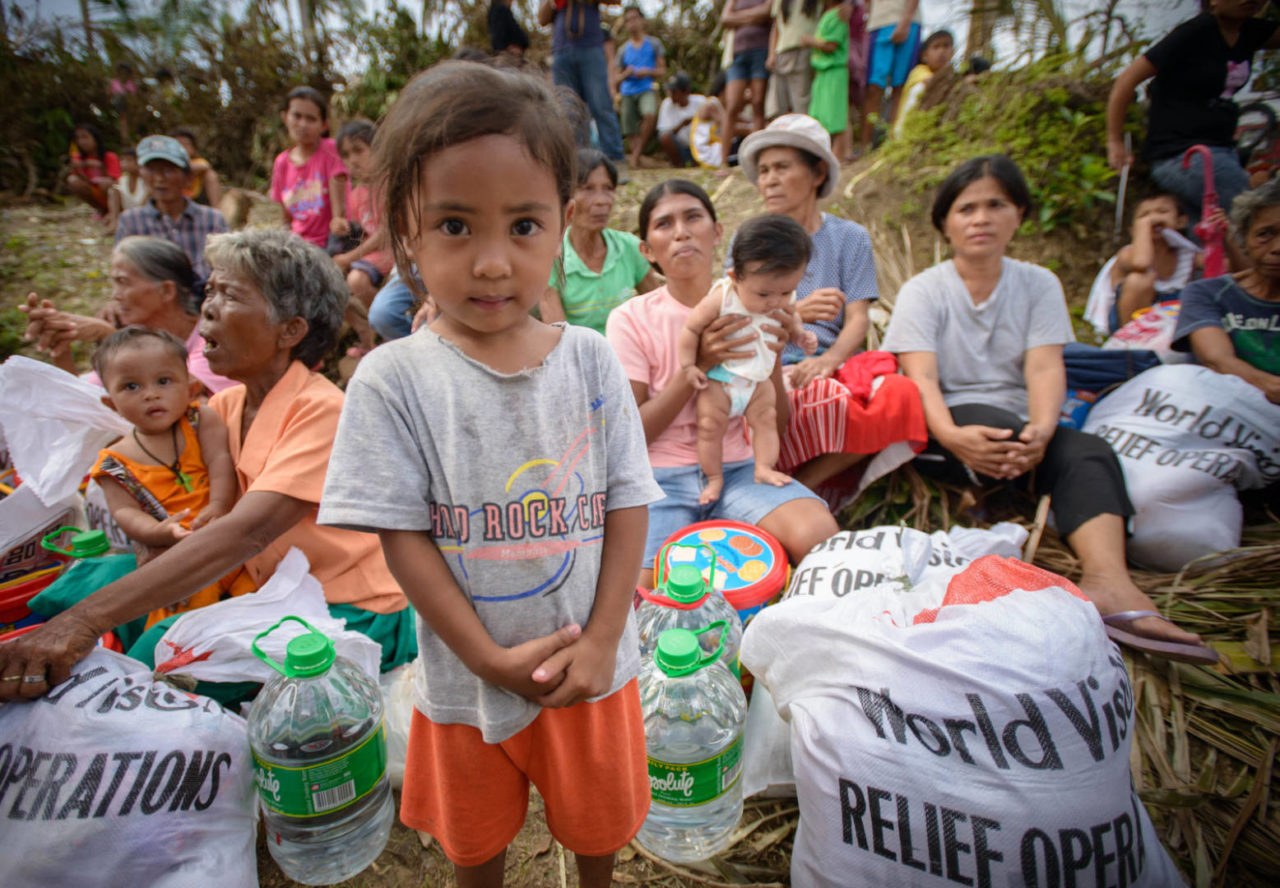
Where did Typhoon Haiyan hit?
Typhoon Haiyan first struck Palau, an island in the western Pacific, and Micronesia. Haiyan then made landfall in the Philippines as a Category 5 storm with wind speeds above 157 mph. After hitting the Philippines, the storm diminished as it moved into the South China Sea toward Vietnam, finally disintegrating into rain over Guanxi, China.
Is the Philippines a disaster-prone country?
The Philippines ranks among the world’s most disaster-prone nations due to its Pacific Ring of Fire location, resulting in earthquakes, volcanic eruptions, and tsunamis. Its position in the western Pacific Ocean also exposes it to tropical cyclones, including typhoons. Just weeks before Typhoon Haiyan, a 7.2 magnitude earthquake struck the country’s Bohol Island, impacting 3 million people and claiming over 200 lives. As families were still recovering and housed in evacuation shelters, Typhoon Haiyan struck, compounding the challenges.
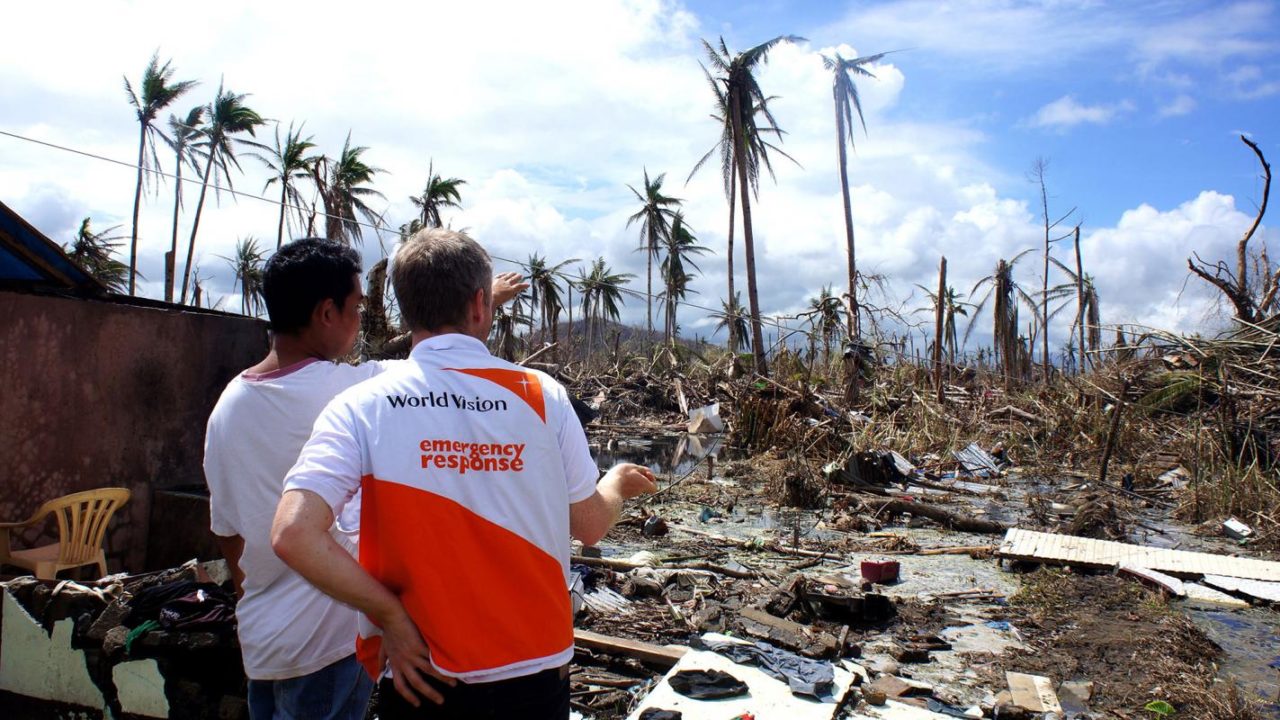
How did World Vision respond to help people affected by Typhoon Haiyan?
Since 1954, World Vision has been actively working in the Philippines, dedicated to caring for children and fostering sustainable communities. Typhoon Haiyan devastated 20 program areas where we were actively involved, including in Bohol province, which had suffered significant damage from an earlier earthquake.
When Typhoon Haiyan hit, our local staff responded immediately. Even as they started their emergency relief distribution, a top priority was reaching out to nearly 40,000 children registered in World Vision’s sponsorship program. U.S. donors sponsored more than 5,600 children in Leyte and Antique provinces.
The Typhoon Haiyan response covered four areas — North Cebu, Panay, West Leyte, and East Leyte — encompassing 566 villages in 48 municipalities that bore the brunt of Haiyan’s impact. By August 2017, World Vision had reached over 1.6 million people during its three-year response, offering vital support to typhoon-impacted communities.
World Vision’s response to Typhoon Haiyan occurred in three phases:
Emergency relief phase (November 2013 to February 2014):
- Reached 789,816 people
- Aided communities with emergency shelter, household goods, food, water and sanitation, education support, health and nutrition programs, cash assistance and livelihoods support, and child protection
Recovery phase (March 2014 to December 2014):
- Supported 321,403 people
- Provided shelter, water and sanitation, health services, livelihoods and cash-based programming, anti-trafficking initiatives, disaster risk reduction, and infrastructure repair
Rehabilitation phase (January 2015 to December 2016):
- Served 84,727 people
- Equipped affected communities with shelter, water and sanitation, infrastructure, disaster risk reduction, and livelihoods and cash-based programming
How can I help children and families in the Philippines today?
- Pray for children and families affected by poverty and recurring disasters in the Philippines and other countries in the Asia Pacific region.
- Give: Your gift will help provide relief to people affected by disasters like Typhoon Haiyan.
- Sponsor a child in the Philippines. When you sponsor a child, you will help a child and their family and community change their life story. You’ll provide access to life-saving basics like nutritious food, healthcare, clean water, education, and more.
Sevil Omer of World Vision’s U.S. staff contributed to this article.
